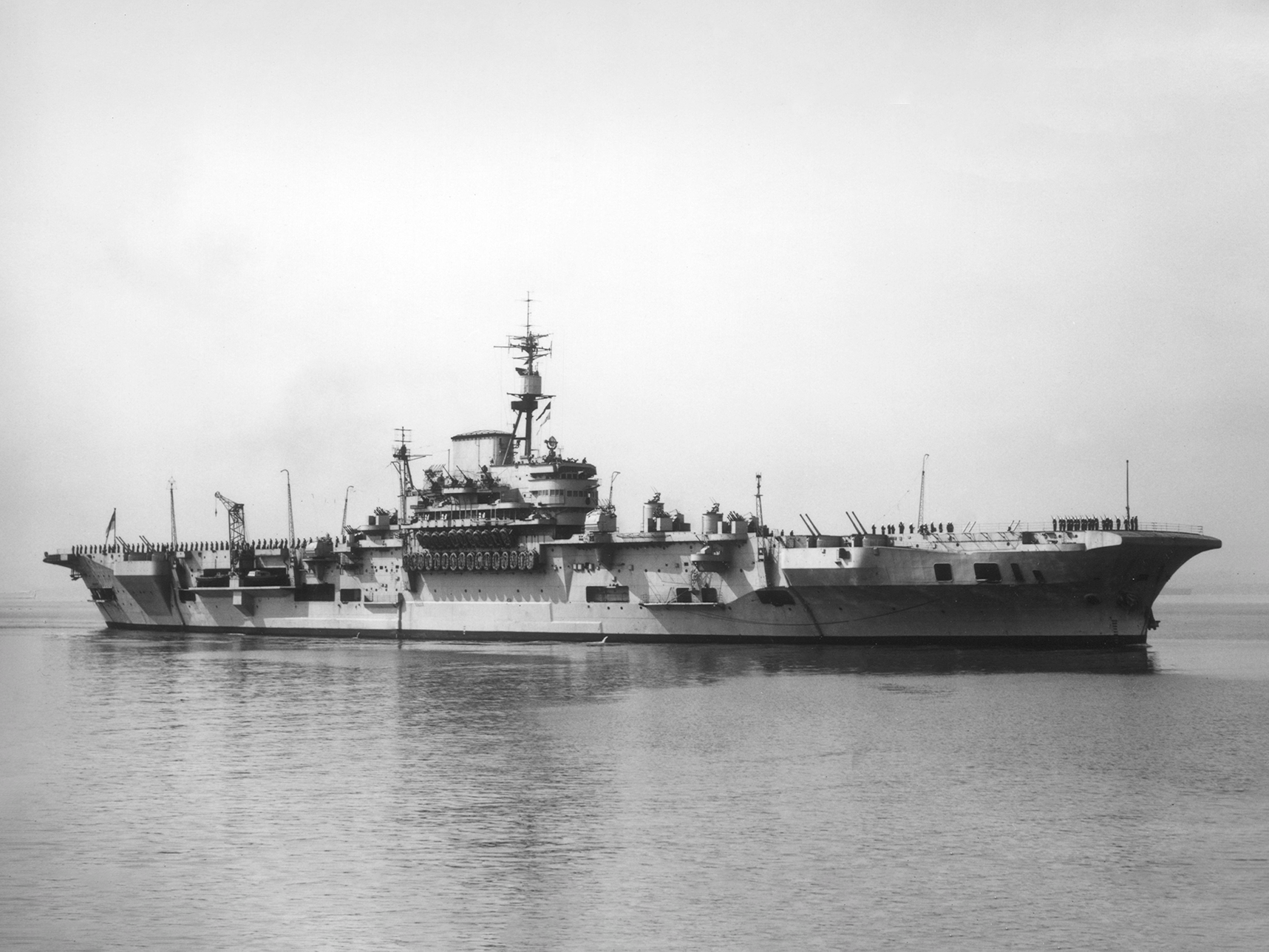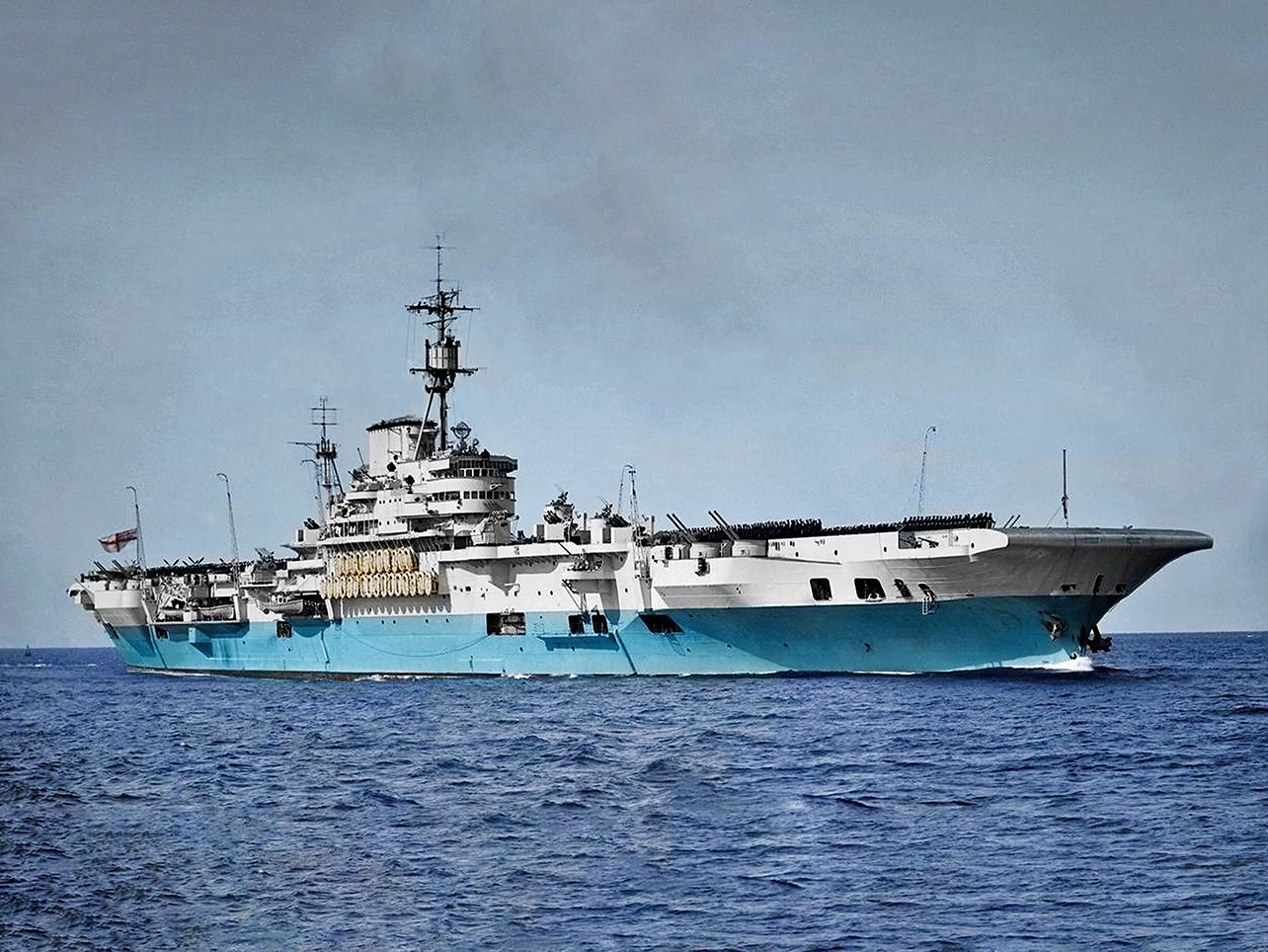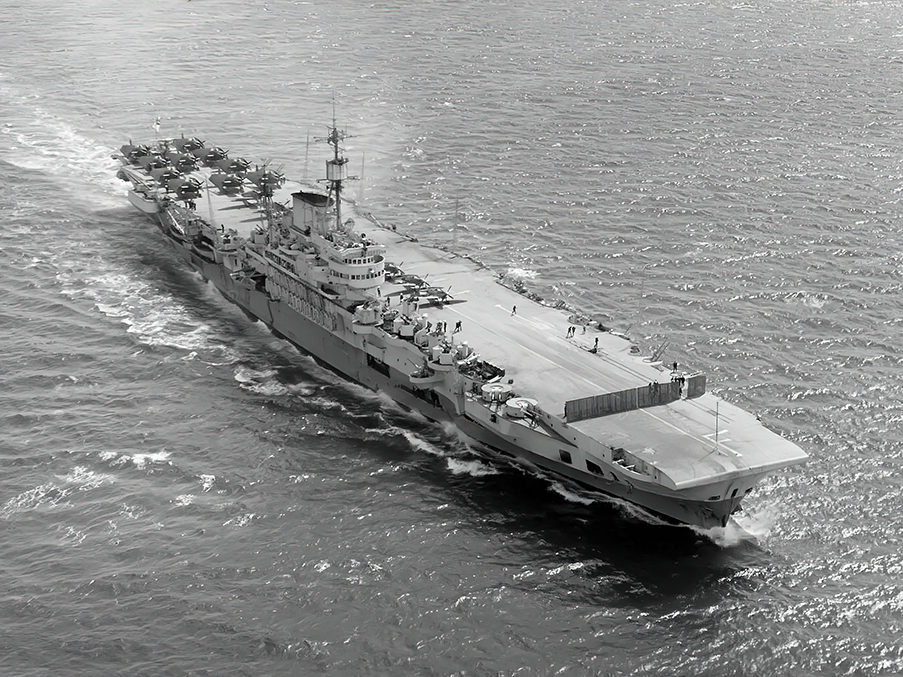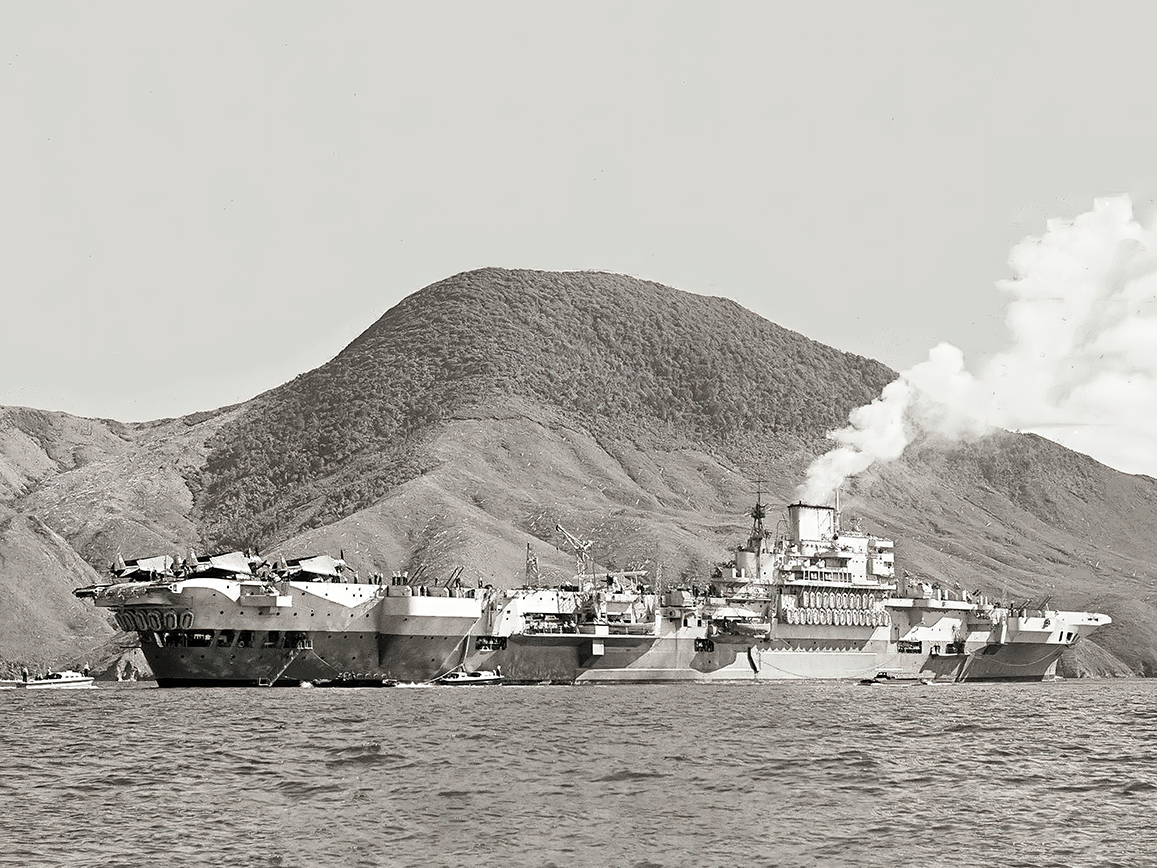Implacable Class Aircraft Carriers: A Comprehensive History
Introduction
The Implacable class aircraft carriers represented the final evolution of the Royal Navy’s pre-Second World War fleet carrier design philosophy. Conceived as an improved version of the Illustrious class, they combined strong armoured protection with greater aircraft capacity, answering the criticism that the earlier class carried too few aircraft. Only two ships were completed, HMS Implacable and HMS Indefatigable, both of which served with distinction in the closing stages of the war and went on to have long post-war careers.
Origins and Design Development
By the late 1930s, the Royal Navy had embraced the concept of armoured flight decks, prioritising survivability over the size of the air group. However, combat experience during the early years of the war revealed that the Illustrious class could not carry enough aircraft to sustain prolonged operations. The Admiralty responded with the Implacable class, which sought to combine the protective features of the Illustrious class with a larger hangar capacity.
The result was a carrier design displacing around 23,500 tons standard and over 32,000 tons fully laden, with a length of 766 feet. The ships retained armoured flight decks and hangars but were designed with two hangar levels, increasing aircraft capacity to approximately 81 aircraft when fully loaded. This nearly doubled the carrying capacity of their predecessors.
Their propulsion systems gave speeds of around 32 knots, making them among the fastest British carriers of their time and allowing them to operate effectively alongside the United States Navy’s fast carrier task forces in the Pacific.
Ships of the Class
Only two ships of the planned class were completed due to wartime constraints:
Several other ships were planned but cancelled as priorities shifted during the war.
HMS Implacable (R86)
HMS Indefatigable (R10)
HMS Indefatigable was commissioned earlier, in 1944, and saw immediate action. She took part in the Norwegian campaign against German shipping and later joined the British Pacific Fleet alongside her sister ship.
In 1945, Indefatigable’s aircraft launched repeated strikes against Japanese positions, including raids on airfields and shipping. She was present during the final months of the war and contributed to operations that weakened Japanese resistance.
Post-war, Indefatigable continued in service as a training carrier, helping to prepare new generations of naval aviators. She was decommissioned in 1956 and scrapped in 1957.
Technical Features
The Implacable class incorporated several technical improvements over earlier carriers:
Displacement: Around 23,500 tons standard, 32,110 tons full load.
Length: 766 feet.
Speed: Up to 32 knots from steam turbines driving four shafts.
Flight Deck: Armoured for protection against bombs and kamikaze strikes.
Aircraft Capacity: Up to 81 aircraft, almost double the Illustrious class.
Armament: Included 4.5-inch dual-purpose guns and numerous anti-aircraft weapons.
The addition of a double hangar was the most significant design change, addressing the key shortcoming of previous carriers.
Operational Service and Legacy
Although they arrived late in the Second World War, the Implacable class played a valuable role in the Pacific. Their ability to operate larger air groups made them more compatible with the American Essex class carriers they often served alongside.
Their armoured decks proved effective against Japanese air attacks, and their operational endurance allowed them to sustain operations far from home waters. After the war, both ships contributed to training and peacetime duties, but post-war defence cuts and rapid advances in naval aviation limited their long-term usefulness.
The class demonstrated that Britain could build large, heavily armoured carriers capable of matching the operational tempo of other major navies. While their service lives were relatively short compared to some ships, they bridged the gap between the wartime fleet carriers and the post-war generation of modernised carriers.
Conclusion
The Implacable class aircraft carriers were the Royal Navy’s answer to the limitations of earlier designs. They successfully combined armoured protection with significantly larger air groups, ensuring Britain could field competitive carriers during the climactic final campaigns of the Second World War. Although their post-war service was relatively brief, their influence on carrier design and their contributions in the Pacific left an enduring mark on naval history.





